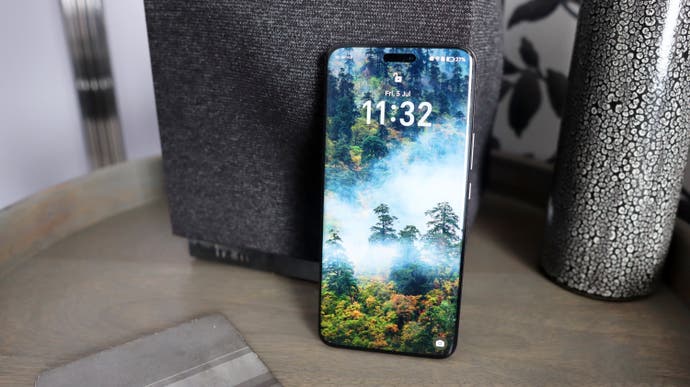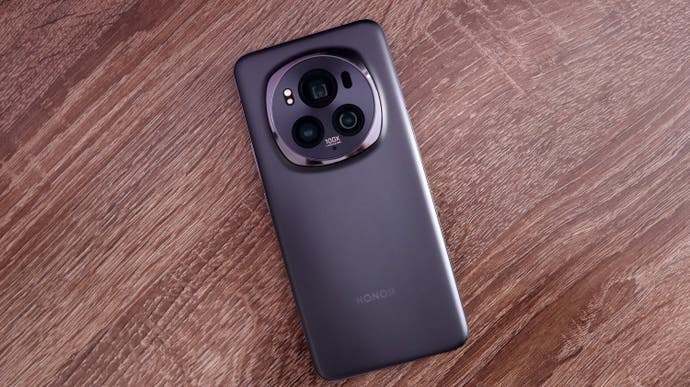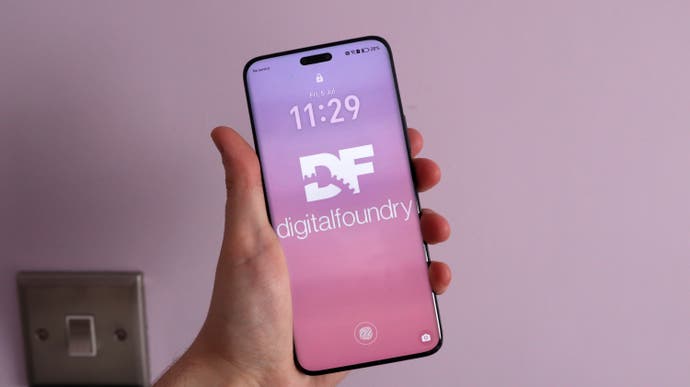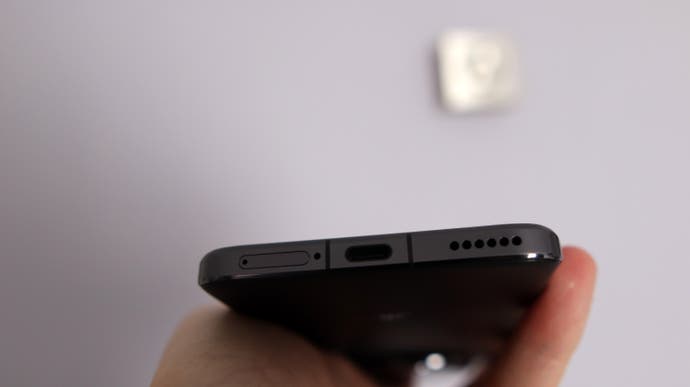Honor Magic 6 Pro review: possibly the best Android phone money can buy
Sleek looks, a marvellous camera and beefy performance.
Honor's Magic 6 Pro was a phone that arrived a few months ago with quite some fanfare, being an option that packs in a shedload of beefy hardware into a sleek design that may well make it one of the best Android phones available - hell, even one of the best phones you can purchase full stop. It's a handset I wanted to get my hands on since I first saw it unveiled and luckily, here we are.
The Magic 6 Pro packs in some excellent specs including the latest mobile Snapdragon SoC with the Snapdragon 8 Gen 3, as well as 12GB of RAM and 512GB of storage in my sample. You also get a ridiculous triple camera setup with a 50MP main sensor, a 180MP periscope telephoto and a 50MP ultrawide, while the display is a beefy 6.8-inch LTPO OLED with support for a 120Hz refresh rate, Dolby Vision, and a peak HDR brightness of 5000 nits, and there's also a larger 5600mAh battery for your troubles, too.
At a £1100 RRP (though currently discounted to £730), it sits at the level of a modern flagship, though undercuts the competition in terms of beating off Samsung's S24 Ultra and Sony's new Xperia 1 VI, making it somewhat good value for money - well, as much as a flagship smartphone can be these days.
Design
As with the foldable Honor Magic V2 RSR Porsche Design I looked at earlier this year, the Magic 6 Pro is gorgeous. It takes everything that's right about modern phone design and puts it together in a package that feels and looks excellent. That goes for its massive display with its slightly curved corners, as well as its smooth glass back. In the grey I've got here, it looks fantastic, although the phone is also available in a green or black, too.
The 6.8-inch screen is one of the biggest I've used, and matches the big screen present on my Galaxy S21 Ultra I use every day, although the phone remains smaller in spite of its identical screen size. In spite of its bigger screen, the Magic 6 Pro is comfortable to use one-handed, with its curved edges conforming to your hand well.

The only thing which makes the Magic 6 Pro a little unwieldy to hold is the large camera bump which is right where my hand sits when I'm holding the phone. It takes a little bit of getting used to, but the Magic 6 Pro remains comfortable to hold and is easily pocketable with an overall thickness of 8.9mm.
Honor also doesn't spring any surprises when it comes to physical touches. You won't find a physical fingerprint button or a microSD card slot, as the sensor is under the OLED display, while the SIM tray holds, well, SIM cards. Buttons on the side are for volume and power, while there's the typical USB-C port on the bottom for charging and connectivity.

In keeping with other flagship devices, the Magic 6 Pro offers full IP68 water and dust resistance, meaning this is also quite a rugged smartphone. It's able to be submerged in up to 1.5 metres of water for up to 30 minutes, according to Honor's own reckoning, so if your phone does end up in the drink, then you should be okay to a reasonable depth, such as in a shallower swimming pool.
Display
The Magic 6 Pro offers a fantastic display on a flagship handset, offering a big 6.8-inch LTPO OLED panel that makes for one of the best ones I've tested. Its curved edges are going to be a bit divisive, and remind of the older Galaxy S7 Edge - a bit of a throwback to a time when curved screens were all the rage, which is a pleasant touch. Otherwise, no bezels to speak of, helping the Magic 6 Pro's modern flourishes.
Nonetheless, this is an excellent display with the signature deep blacks and sharp colours encountered both in games and when viewing a range of content on YouTube, Prime Video and Disney+. Its peak HDR brightness of up to 5000 nits is ridiculously bright for highlights in supported content, but day-to-day usage is likely to bring that down closer to 1600 nits, which is still plenty bright enough.

The 120Hz adaptive refresh rate makes the OLED panel a responsive one, and an excellent one for games therefore, as well as feeling nippy during day-to-day workloads, using apps and such, which involves a lot of swiping where the benefit of a higher refresh rate is certainly felt.
The Magic 6 Pro's screen also has the added benefit of being protected by what Honor calls its NanoCrystal Shield, which they claim offers 10 times stronger protection than bog-standard glass. While this wasn't something I could necessarily test, it's handy for the sake of peace of mind, knowing you can slap your phone in your pocket with any keys or unnaturally spiky things, and it should come out completely fine.
Camera
As well as offering a fantastic display, the triple camera setup on the Magic 6 Pro is sublime. It comes with one of the best I've used, with a potent combination of a 50MP main sensor, a 180MP periscope telephoto and a 50MP ultrawide that beats off a lot of the competition for sheer vibrancy and detail.
The 50MP main sensor is a particular standout with it extracting some marvellous quality in images I've taken of varying things around the house, such as a vase with a Charles Rennie Mackintosh design on it, or a sign on the side of a building in Central London. For the former, the vibrancy of the pink on the vase is marvellous, while it also captured the degradation of the bricks on the Portland Place wall wonderfully well. The colours of the hedge in that photo, or the blue of the sky in any landscape photo look right - they're beautifully presented.
Zooming in a little on items such as the BT Tower from street level also allowed the Magic 6 Pro to capture some brilliant detail, too. It's here where the power of the camera's 180MP periscope telephoto snapper comes into full effect, offering a fantastic experience. The snapper's portrait mode offered one of the best bokeh effects I've seen on a set of statues, while even without the mode on, it also blurred a background well - take a look at the picture of a lamp post in the Royal Academy of Arts.
Low-light performance is also solid too with good detail levels. It's here where AI is added into the mix to help reduce noise in certain instances and images tend to look a lot sharper and more vivid than with the increasingly naturalistic presentation from the likes of Samsung. Honor seems to have whacked up the saturation in some cases with night shots, lending them to offer stronger, but less natural colours.
As for the 50MP selfie camera on the front, this offers a sharp autofocus and a wide f/2.0 aperture for capturing excellent light levels for your vain selfies in bright or dark conditions. While it may not be as strong as the rear snappers, it's still more than serviceable.
Performance
Being a 2024 handset means the Magic 6 Pro offers the benefit of the brand-new Snapdragon 8 Gen 3 SoC which offers some serious gains over the previous generation, both in day-to-day use and when under load in games and in synthetic benchmarks. It's by far and away the beefiest phone we've tested in terms of performance, setting quite a high bar for future testing.
For day-to-day workloads and multi-tasking, the Magic 6 Pro offers an immensely responsive experience, whether I was typing up articles on Google Docs or on the Eurogamer CMS in Google Chrome, editing photos in the camera app, listening to music over Spotify, or mindlessly scrolling on X or Facebook. To be honest, this sort of workload is barely putting the Magic 6 Pro under any pressure, and pushing it to the limits with everything from Geekbench 6 and 3D Mark Wild Life Extreme to PC Mark Work V3.0 proved its chops even further.
| Benchmark | Honor Magic 6 Pro | Sony Xperia 5 V |
|---|---|---|
| Geekbench 6 Single Core | 2243 | 2069 |
| Geekbench 6 Multi Core | 6813 | 5585 |
| 3D Mark Wild Life Extreme | 5191 | 3725 |
| GFX Aztec Ruins High Tier | 88fps | 59fps |
| GFX Car Chase | 104fps | 60fps |
| PC Mark Work V3.0 | 15173 | 12466 |
With the gains made with the new Snapdragon 8 Gen 3 SoC and its Adreno 750 GPU, it's perhaps little surprise to find that the Magic 6 Pro smashes our previous best results in benchmark testing with handsets that had the previous Gen 2 SoC, such as the Sony Xperia 5 V. The results in the likes of GFX Aztec Ruins High Tier and Car Chase are particular highs, and testament to this phone's gaming performance, while a brilliant result in PC Mark Work V3.0 proves how well-suited it is for intensive productivity workloads.
Over extended loads, the Magic 6 Pro got seriously toasty in the 3D Mark Wild Life Extreme Stress Test, and experienced a 49.6% drop in performance over its 20 minute runtime, which is a larger drop than phones with the previous SoC. When also engaging in the likes of COD Mobile, PUBG and Diablo Immortal too, while the Magic 6 Pro offered a responsive and capable experience, it did have a tendency to get quite warm under load, although not to the point where it became unusually uncomfortable to hold.
The 12GB of RAM inside this handset is plenty for those intensive workloads, while the 512GB storage inside my sample offers a solid amount of room for storing lots of apps and media, even if you've got a large library of music in MP3 and FLAC format as I have. The Magic 6 Pro is also available with an even bigger 1TB internal capacity if you need more space, although that is harder to come by than with its 512GB capacity. As is in-keeping with modern phones though, the Magic 6 Pro's storage isn't expandable with a Micro SD card slot, unfortunately, unlike the Sony Xperia 5 V.

On the front of software, the Magic 6 Pro comes shipped with Android 14, and as is typical with Honor phones, comes with their MagicOS skin over the top. To be specific, it's MagicOS 8, with its looks borrowing a lot from iOS with similar app icons. In a more general sense, MagicOS 8 gives off an iOS vibe where vanilla Android 14 or Samsung's OneUI simply doesn't, even extending to the phone's notification centre and customisable standby screen that shows up when you plug the phone in.
As is the way in 2024, MagicOS 8 also bundles in some AI features. The most useful of these is Honor's MagicPortal, which can be enabled in the phone's settings menu. What it allows you to do is drag and drop text from a search directly into a selection of apps by holding down on the text you want to copy and then drag it to a vertical edge of the screen. For instance, if you want to put an address directly into Google Maps without exiting out into Maps and then back to Chrome to make sure you got the address right, then it makes life a fair bit easier. Otherwise for me at least, I found its use case a bit limited - Googling a band and putting it into YouTube as a search query didn't work, for instance.
Otherwise, the Magic6 Pro comes with eye-tracking tech for dealing with notifications and other messages with a small glance as part of the Magic Capsule feature. Magic Capsule on its own works like Apple's Dynamic Island does on modern iPhones, allowing for simple control of apps such as the Clock for setting timers and for answering phone calls via the holepunch front camera at the top of the display. Magic Capsule itself is convenient, although the eye-tracking tech is yet to make its way to shores other than in China, which is a bit of a shame.
Battery Life
Against the competition, the Magic 6 Pro offers quite a large battery with a 5600mAh capacity that allows for some solid results in both benchmarks and day-to-day running. Our customary PC Mark Work V3.0 battery test served up a result of 15 hours 32 minutes before the phone conked out, which offers some fantastic results and means you'll be able to last for quite a while before needing to plug the device in. In my day-to-day use, I managed to get through a long day with approximately half charge, so you'll be able to get quite a while out of the Magic 6 Pro.
The big thing here is the kind of battery inside the Magic 6 Pro, which is made of silicon-carbon as opposed to the standard lithium-ion. This has a couple of important benefits, such as being much better for the environment, and by being a lot smaller and denser, making it able to work in much colder environments. The battery also has some handy tech inside to prolong its life, with both power management and real-time voltage detection to ensure it's being used at an optimal rate. That's very nifty.
The Magic 6 Pro also supports super-fast charging on both wired and wireless means with both 80W SuperCharge wired and 66W Wireless SuperCharge, meaning you can get brisk results if you're caught in a pinch. The trouble here is that Honor doesn't supply a wired or wireless charger in the box, so you'll have to purchase them separately.
Conclusion
The Honor Magic 6 Pro represents a large leap forward for a flagship handset from a brand you may not have thought twice about before. Honor is certainly going places with some of their new releases, and this latest option rivals the big guns in everything from beefy performance to one of the cameras I've used on a phone to date.
The screen is excellent too, with fluid motion and marvellous vibrancy, while it's also one of the sleekest slabs of metal out there, and offers solid endurance. The only issues here are small ones, such as the limited use cases of Honor's much-talked-about AI features and the shortcomings of MagicOS compared to other Android builds, such as Samsung's One UI.
On the whole though, the Honor Magic 6 Pro is easily the best Android phone I've used, and it certainly seems like Honor is becoming a key player at the top end of the market. Samsung and company may have to watch out in future, because this is just fantastic.













